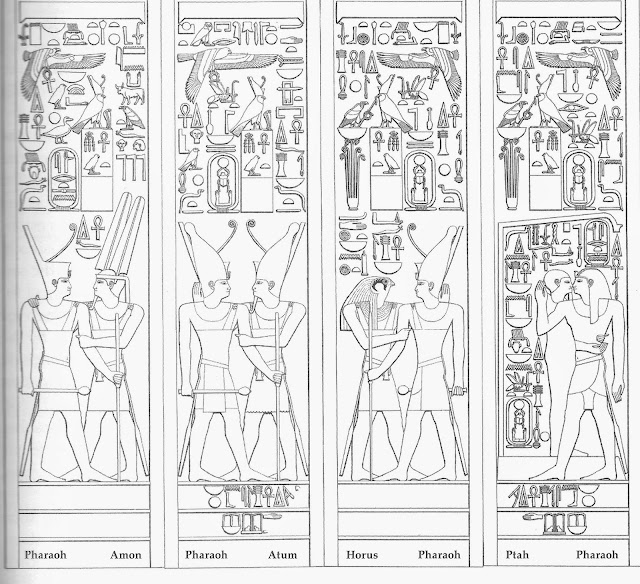 |
|
"The Miraculous Draught of Fishes" by Sebiastiano
Ricci, circa 1695-1697,
oil on canvas, The Detroit Institute of Arts
|
Toward morning the apostles saw a man standing on shore who called to them asking if they had caught any fish. After answering in the negative the man then instructed them to cast their net one more time on the right side of their boat. After doing so the fishermen caught a "multitude of fishes".
It was at this point that John and the other disciples realized that the man onshore was the Savior and after dragging the net to land they proceed to count the number of fish which turned out to be 153. John also points out that despite the large number of fish the net was not broken.
 |
|
Stained glass depiction
of St. John at St. Matthew's
German
Evangelical
Lutheran Church in
Charleston,
South Carolina.
|
The question as to why John would include the exact number of fish in the net has been debated for centuries and no consensus has ever been found. Some have asserted that he included the number to show just how large the haul was to emphasize the miraculous nature of the occurrence. Jerome cites the Roman teacher Oppian who wrote that there were 153 species of fish in the world and contends that John included this number to teach that the gospel was for all the world and to illustrate the inclusivity of Christianity. He makes this argument despite the fact that Oppian lived and wrote more than a century after the time of Jesus, and thus could not have been an influence on the apostle.
An additional explanation has been proposed which looks at Hebrew gematria relationships, especially the phrase "sons of God" (בני האלהים - beni ha-elohim) whose numerical value is 153. The proponents of this idea theorize that John included the fish count to show that the chosen sons of God were to be gathered into the gospel net through the preaching of John and his fellow apostles. This explanation seems plausible and if true it would be helpful to discover what the phrase may have meant to John and his contemporaries.
The Yale Anchor Bible Dictionary (hereafter YABD) explains under the entry "Sons of God" that "The designation 'sons (son) of God' occurs in the OT in three clearly definable categories depending on whether it refers (1) to divine or angelic beings; (2) to Israelites or Israel as a whole; or (3) individually to the king."
Following the exile and during the intertestamental period the term began to be used mostly to denote chosen Israel. The YABD entry contains a fascinating discussion of how the "sons of God" phrase was utilized in the sacred literature of the period:
“Son(s) of God” (or its equivalent) becomes virtually a synonym for “people of God” (= Israel), while the OT associations of election, closeness to God, and special protection continue. The ethical aspect of the sonship metaphor also continues (Add Esth 16:14–16; Pss. Sol. 17:30; L.A.B. 16:5), often associated with the idea of disciplinary chastisement (Wis 12:20–21; 16:10–11; Pss. Sol. 18:4).
A fresh development, however, is the considerable frequency with which the motif occurs in eschatological contexts. This suggests that it was an epithet felt to be particularly apt to describe the ideal Israel of the end time, the holy and purified people of God, destined to possess or actually in possession of the blessings of salvation (Jub. 1:25–28; Pss. Sol. 17:30; Sib. Or. 3:702–4; 5:248–50). Frequently, acknowledgment of sonship suggests the idea of rescue from or immunity to death. Connected with this is a widespread tendency in the intertestamental period to characterize the future awaiting the righteous as a restoration of the angel-like immunity to death enjoyed by human beings before the fall (1 En. 69:11; 2 En. 30:11; Wis 1:13–14), along with other angelic characteristics and privileges such as a shining countenance, vision of God, and presence at the heavenly liturgy (Wis 5:5; 2 Bar. 51:3–12; Pr. Jos. A). The combination of these motifs in the eschatology of several texts suggests a conflation in the later period of the formerly separate categories of “Israelite” and “heavenly being (angelic)” divine sonship (Byrne 1979). (linked added)
During the New Testament era the YABD states that the phrase "sons of God" was used by the early Christians to refer to the community of believers who followed the fledgling Christian movement while also retaining the eschatological context which was a distinguishing characteristic of the post exile period.
Whether John was utilizing gematria or not will probably never be known for sure but in the absence of a better explanation it seems like the most likely possibility.












.jpg)




